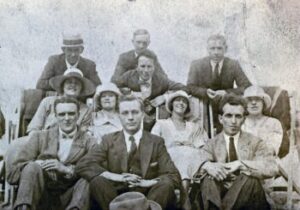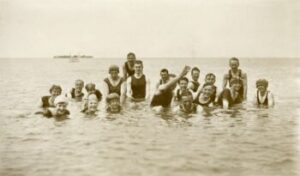When it comes to sports, dozens of leagues entertain fans from around the world. At the moment, millions (if not billions) are gearing up for the Summer Olympics in Paris.
Unsurprisingly, the Olympic Games (both summer and winter) are hugely popular around the world.
But beyond the scope of the Olympics, most of the most popular leagues and events revolve around men’s sports.
From the FIFA World Cup to the Tour de France to the ICC World Cup, most of the most-watched sports in the world are men’s competitions. Currently, however, this outlook is changing.

A Rise in Female Spectators & Fans
The FIFA Women’s World Cup is the strongest example of the rise of women’s sports. In the US, where women’s soccer has a solid fan base, viewership was up 99% during the 2023 group stage games compared to the 2019 event. China also saw a massive surge in viewership, with 53.9 million fans tuning in during group stages.
***Please note. There are sponsored links in this post.***
Even women’s betting saw a surge during this time. One group from the UK found that just over twenty percent of all wagers placed during the first three games were from female bettors. With sports betting on the rise worldwide, women also have access to welcome bonus offers from groups like bet365 and beyond. Along with the FIFA Women’s World Cup, events like Wimbledon are also popular for female bettors.
Despite the rise in women’s leagues and tournaments, many would argue women’s sports have been around for a long time. Though the idea is that women’s sports lack visibility, infrastructure, and fanbases, this hasn’t always been the case. Let’s jump into the way-back machine and take a look at some of the first women’s leagues—starting all the way back in the 1800s.
Victorian-Era Women’s Soccer in England
Few people today would believe that there was a time when women’s soccer drew in larger crowds than men’s games. Even fewer people would imagine this place to be England. However, female soccer was a major affair back in the Victorian Era. In fact, around the turn of the century, a crowd of 25,000 traveled to watch England and France play their first international match. A women’s game, no less.
The trend continued on into the early 1900s. Throughout England, women’s teams (though fewer and far between than men’s) drew solid crowds. Women wore shorts despite social norms. And not everyone in the crowd attended to jeer at the women—the vast majority were actual fans.
Some competed in clubs, such as the Maldon Ladies Football Club. Many others joined local teams based on where they worked. For example, Coventry had a strong rivalry between teams from different warehouses. One Boxing Day match from 1920 amassed a crowd of 53,000 in Liverpool.
But by 1921, the Football Association had banned women’s teams from playing on their fields, effectively ending women’s soccer in England for the next half-century.

Ann Glanville & Her Rowing Crew
Let’s venture back even further to shine a spotlight on one powerful woman in sports. We’re staying in England and moving to the early 1800s. Ann Glanville earned national celebrity for her work leading a female rowing crew. She got the job after her husband, a waterman who worked on the rivers, passed away and left her with a large family to take care of.
Originally, Ann took to the water to earn money to support her family. However, she soon learned that she had a penchant for rowing. She put together an all-female crew and they took on others in local competitions. One of which was viewed by Queen Victoria, who congratulated Ann herself after her team won the competition by beating an all-male rowing team.
In 1833, Anne’s rowing crew headed to France to take on international competitors. Some accounts say her rowing team beat the male crew by at least one hundred yards. However, a bit of historical digging uncovered that Ann’s team had taken on an amateur male team because the professional rowers refused to compete against women.